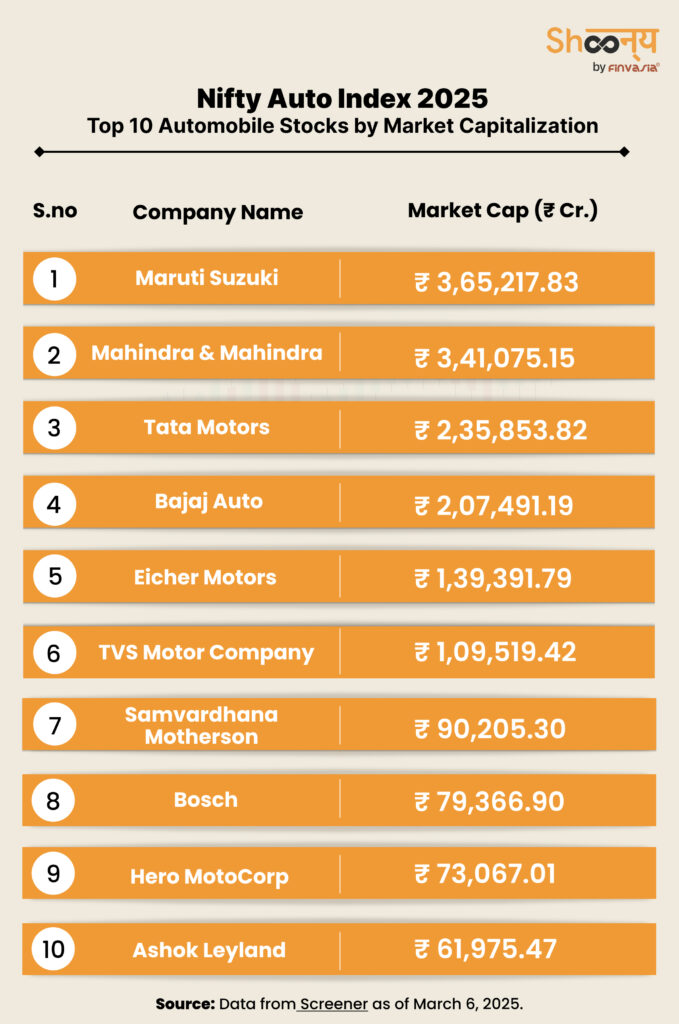JM Value Fund Direct-Growth: Key Insights, Returns, Risks, and More

JM Value Fund Direct-Growth: Key Insights, Returns, Risks, and More
In any investments, it’s all about the asset’s value, right? The returns depend on the value of the asset, whether the same went up or down from the day of investment, and this is irrespective of asset classes. The target is to always buy cheaper, which means at a lower value, and wait for the asset’s value to shoot up, right? For JM Value Fund Direct – Growth, this is the exact motto of the fund manager, and in this article, we will be understanding this fund, will analyses how it performed over the years, for whom this fund is suitable, and lots of other aspects of the fund which you as an investor would like to learn about if you are considering this fund in your investment portfolio.

JM Value Fund Direct-Growth Fund Management and Objectives
JM Value Fund Direct-Growth is a value fund where the asset under management of this fund is invested in securities that are undervalued, with the prediction and hope that the value of the securities will increase over time to reach their fair value or intrinsic value. This brings us to the objective of the fund, which is to generate wealth over the long term and build a well-diversified portfolio. JM Value Fund Direct Plan-Growth is managed by –
- Satish Ramanathan: He has been managing this fund since 20 August 2021, and before joining JM Mutual Fund, he was associated with Sundaram BNP Paribas AMC, where he had years of experience in the asset management arena, and he was also involved in the research segment of the firm. Apart from this, he was associated with ICICI Securities, ICRA Ltd., Birla Merlin& Dewoo Finance, and also worked at TCS for a year. He also manages other funds at JM Mutual Fund, which include the JM Flexcap fund, large cap fund, midcap fund, arbitrage fund, and more. He holds an MBA and CFA, and a B.Tech as well.
- Asit Bhandarkar: He has been managing the fund since 1 January 2023, along with other funds at the JM Mutual Fund house. He earlier worked with SBI Fund Management Pvt. Ltd. and Lotus India AMC Pvt. Ltd. He is a B.Com (Hons.) graduate and holds an MMS in Finance.
- Chaitanya Choksi: He has been associated with this fund since October 2024. Before joining JM Mutual Fund, he was working at Chanrai Finance Pvt. Ltd., and also worked at IL&FS Investmart and also at UTI Investment Advisory Services Ltd. He also holds an MMF in Finance along with CFA.
- Ruchi Fozdar: She started managing this fund since 4 October 2024. Earlier she has worked with brokerage houses such as Reliance Life Insurance Co. Ltd., Mahindra Manulife Mutual Fund and others. She holds a PGDBM in Finance and completed her graduation with science stream.
Excited about investing in the JM Value Fund? Open a free Demat account today!
How Does the JM Value Fund Work?
The JM Value Fund works in the line of value investing. So, suppose a stock is priced at X, but the fair price of the stock is Y, which is ₹100 more than X. Now, the price of the stock will be moving and ultimately reaching the fair price as per investing basics. So, the fund managers put this fundamental of stock pricing, which is known as value investing, where the price of a stock gradually moves towards the intrinsic value or fair value, to use. They pick stocks which are undervalued and have potential for rise or having a higher intrinsic value, and then allocate them in a well-diversified manner to generate wealth over time.
Performance and Returns (As of 28 Mar 2025)
JM Value Fund Direct-Growth has been offering a consistent performance over the years. Here is a detailed return and performance analysis of the fund –
| Time Frame | JM Value Fund Direct-Growth (%) | Category Average |
| Since Inception | 16.89 | – |
| 6 Month | -18.31 | -12.68 |
| 3 Month | -12 | -4.01 |
| 1 Month | 5.17 | 7.13 |
| 1 Day | -0.29 | -0.38 |
| YTD | -12 | -5.55 |
| 1 Year | 5.10 | 7.15 |
| 3 Year | 21.37 | 18.99 |
| 5 Year | 30.96 | 30.93 |
| 7 Year | 17.12 | 15.60 |
| 10 Year | 16.35 | 14.78 |
If you look at the above table, then the fund has performed well in the long run compared to its peers, while in the short term, when the markets are volatile, it has given poorer returns, even lower than the category average.
Investment Allocation (As of 28 Feb 2025)
The JM Value Fund Growth has 99.78% of its assets invested in equity and equity-related instruments, with just 0.22% in cash and cash equivalents. Market cap-wise asset allocation
- Giant cap – 39.69%
- Large Cap – 19.31%
- Mid-cap – 20.54%
- Small-cap – 20.46%
As of 28 February 2025, the fund had an average market cap of ₹76146 crore, and it spans across 51 stocks, where the top 10 stocks make up 39.45% of its assets. Sectoral Allocation The fund invests across sectors, offering a well-diversified portfolio. Here are the top five sectors as of 28 February 2025 –
| Sectors | Allocation (%) |
| Financial Services | 31.93 |
| Consumer Discretionary | 15.31 |
| Technology | 14.30 |
| Healthcare | 11.33 |
| Industrials | 10.82 |
Stock-wise Allocation The top five stocks of the JM Value Fund include –
| Stocks | Assets (%) |
| HDFC Bank | 7.46 |
| Infosys | 6.02 |
| Bajaj Finance | 4.92 |
| ICICI Bank | 4.24 |
| Dr. Reddy’s Lab | 3.22 |
Key Metrics
As of 28 February 2025, the fund had an expense ratio of 1.06%, which is a bit higher than the category average of 0.94%.
| Fund Details | Information |
| AUM (Assets Under Management) | ₹937 Crore as of 28 February 2025 |
| Category | Equity Fund, open-ended |
| Fund Manager | Satish Ramanathan, Asit Bhandarkar, Chaitanya Choksi & Ruchi Fozdar |
| Exit Load | 1% for Redemption within 30 days |
| Entry Load | Nil |
| Minimum Investment | ₹1000 (Lump sum) ₹100 (SIP) |
| Benchmark | BSE 500 (TRI) |
The JM Value Fund NAV as of 28 March 2025 stood at ₹98.8929.
Risk and Performance of the JM Value Fund
This fund is classified as a ‘Very High Risk’ fund, which indicates that the fund has the potential for higher returns, but there will be high volatility as well. Here are the risk ratios you need to consider for this fund –
- Standard Deviation (Std Dev% %): It shows how much the returns vary from the average returns generated by the funds themselves. The higher this number, the more it fluctuates.
The Standard deviation of the fund is around 16.77% higher than the category average of 14.63%, depicting a bit more fluctuations.
- Beta: This ratio indicates the volatility of the fund’s performance, compared to similar funds in the market. The lower the Beta, the more predictable the returns are, and vice versa. It helps in comparing funds.
The JM Value fund has a beta of 1% while the category average is also 0.98%, indicating similar to a nominally higher volatility.
- Sharpe Ratio: This ratio indicates the return you get for the risk you’re taking. A higher number means better risk-adjusted returns.
Currently, this fund has a Sharpe ratio of 0.83%, while that of the category is 0.78%, which indicates that the fund has been offering a nominally better risk-adjusted return.
- Sortino Ratio: It is similar to Sharpe but only looks at downside risk (the risk of losing money).
This fund offers a bit higher downside risk-adjusted returns compared to its peers. The average for the category stands at 1.32%, while this fund has 1.42%, indicating higher downside risk-adjusted profits.
- Alpha: It measures the extra return the fund gives above the market’s average return.
The fund offers a better return compared to that of its peers as depicted by its Alpha of 7.8% while the average of the category is 5.23%.
Taxation for JM Value Fund
If you’re investing in the JM Value Fund, here’s how your returns will be taxed:
- Short-Term Gains – If you sell the fund units within 1 year of the date of investment, a 20% tax will be levied on the entire return generated during the period.
- Long-Term Gains – If you sell the fund units after one year, any profit generated over and above ₹ 1.25 lakh will be taxable at a 12.5% rate. The same rate will be applicable for any investment tenure above 1 year.
So, the longer you hold your investments, the better returns you can expect and the less effect of taxes!
- Taxes on Dividends – Dividends earned, if any, will be taxable at the hands of investors as per their tax slabs. If the dividend income surpasses Rs. 5000 in a financial year, then the fund house will deduct 10% TDS before disbursing the dividend into the account of the investor.
Minimum Investment and Lock-in Period The minimum investment amount in the JM Value Fund is ₹1000 for lump sum and SIP, which is ₹100. There is no lock-in period for the JM Value Fund Direct-Growth. Invest in the JM Value Fund — SIP or lump sum at zero brokerage!
How to Invest in JM Value Fund Direct?
You can invest in the JM Value Fund – Direct Growth plan with Shoonya. Shoonya offers a free Demat account, Zero brokerage trading, advanced trading tools, 100+ technical indicators, and much more!
Investing in Lump Sum Mutual Funds through the Shoonya Web Platform
Here’s a quick guide on how to invest in lump sum mutual funds through the Shoonya web platform:
- First, you must log in to your Shoonya account at trade.shoonya.com. From the “Orders” section, click on “MF order.”
- Search for the fund you wish to invest in; in this case, the JM Value Fund – Direct Growth plan.
- Choose “Fresh” for a new investment and enter the amount you want to invest.
- You can complete your purchase by clicking the “Purchase” button.
- You will receive a payment link on your registered email. Use the link to make the payment.
After payment, your mutual fund units will be allotted to your Demat account within T+2 days. Note: You can only make the payment using the bank account registered with your Demat account.
Setting Up an SIP for Mutual Funds
If you prefer a Systematic Investment Plan (SIP) for JM Value Fund Direct Plan-Growth plan, you must follow these steps:
- First, you need to log in to your Shoonya account at trade.shoonya.com. Go to “Orders” and click on “XSIP.”
- Find the mutual fund for which you want to set up an SIP. In this case, the JM Value Fund – Direct Growth plan.
- If this is your first SIP with Shoonya, you need to create a Mandate ID.
For that, you must enter the mandate amount and the validity date (until you want to keep your SIP active).
- You must submit the details, and you’ll receive a Mandate authentication link via email. Approval generally takes 24 hours.
Once your Mandate is approved, you can follow these steps to set up your SIP:
- Go to “XSIP,” enter the SIP amount, and select “Fresh” as the transaction type.
- Choose the date when the SIP will be debited directly from your registered bank.
- The approved Mandate ID will auto-reflect.
- Choose “Monthly” for monthly debits and specify the number of installments (e.g., 24 installments for a 2-year SIP).
If you do not want to forget your SIPs and invest systematically, the SIP method can be most suitable for you.
Why Invest in the JM Value Fund?
The reasons for investing in the JM Value Fund Direct-Growth can be the fund’s –
- Consistent returns in the long-term
- Help in building wealth in the long-term
- Well-diversified portfolio helps mitigate risks
Suitability of this Fund| Who Should Invest?
The JM Value Fund Direct is suitable for investors who:
- Are looking for higher returns and ready to take higher risk
- Looking for long-term capital appreciation
- Can stay invested for at least five years
- Can tolerate market ups and downs and business cycles
Conclusion
JM Value Fund make use of the very investment tactic that is value investing coined by Benjamin Graham. If you are looking for long-term investment plan, and want to accumulate wealth over time then this fund can be a good choice for your portfolio. However, check and analyses the risk factors and other details to understand the fund better and whether it fits your portfolio or not.
JM Value Fund Direct Plan-Growth plan | FAQs
What is the JM Value Fund – Direct Plan?
JM Value Fund – Direct Plan is an open-ended equity fund, that invests in equities and equity-related instruments of stocks which are currently undervalued.
What is the expense ratio of the JM Value Fund – Direct Plan?
The expense ratio of the JM Value Fund – Direct Plan is 1.06% as of 28 February 2025.
What is the current NAV of the JM Value Fund – Direct Plan?
The current NAV (Net Asset Value) of the JM Value Fund – Direct Plan as of 28 March 2025 stood at ₹98.8929.
What is the AUM of the JM Value Fund – Direct Plan?
The total assets under management (AUM) of JM Value Fund – Direct Plan is ₹937 crore as of 28 February 2025.
What is the Riskometer level of the JM Value Fund – Direct Plan?
The Riskometer level of the JM Value Fund – Direct Plan is marked as “Very High Risk”.
Source : ABC
Disclaimer: Investments in the securities market are subject to market risks; read all the related documents carefully before investing.
Explore Our Offerings

Stocks
Trade a diverse selection of stocks with advanced tools and learn about stocks


Future & Values
Trade a diverse selection of stocks with advanced tools and learn about stocks


Future & Values
Trade a diverse selection of stocks with advanced tools and learn about stocks




